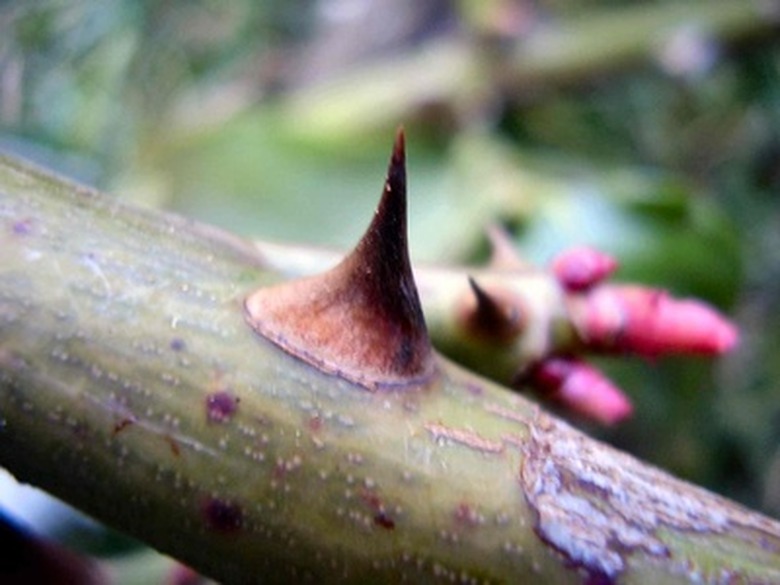Rose Stem Diseases
Rose stem diseases caused by fungi, viruses and bacteria are not only damaging to canes but also to foliage and blooms. Culprits may be location-specific or widespread. Gardeners capable of identifying existing and potential problems are able to cure or prevent disease. As a first line of defense, buy only top-quality plants, certified stock free of disease.
Crown Gall
Crown gall is most evident at the soil line. Small tumors, or galls, develop on the stem, crown and roots. This disease is caused by bacterium and is found in trees, roses and other herbaceous plants. Galls interrupt water and food supplies, causing roses to become stunted and fail to bloom. Avoid roses with suspicious bumps on lower stems when purchasing. Plant roses carefully to avoid stem injury. There is no cure for crown gall. Infected plants should be removed and destroyed.
- Rose stem diseases caused by fungi, viruses and bacteria are not only damaging to canes but also to foliage and blooms.
- Galls interrupt water and food supplies, causing roses to become stunted and fail to bloom.
Rose Rosette
Rose rosette, or witches'-broom of rose, has unknown origins. Limited to the genus Rosa, this disease is spread by eriophyid mites and grafting. Rapid growth of red pigmented stems is the first symptom of rose rosette. Leaves will show secondary symptoms in the form of deformation, brittleness and yellow or red coloring. This rose disease has no cure and plants will die completely within two to five years. At the first sign of witches'-broom, plants should be removed and destroyed to prevent spreading. Pesticides provide some protection when used weekly during June and July.
- Rose rosette, or witches'-broom of rose, has unknown origins.
- At the first sign of witches'-broom, plants should be removed and destroyed to prevent spreading.
Canker
Canker is caused by several types of fungi. This disease will produce lesions on the rose canes. Left unattended, stems will die entirely. Remove and destroy infected canes. Prune well below visible cankers with sterilized shears. A solution of 1 part bleach to 10 parts water is suggested for sterilizing shears between cuts. Canker enters stems through existing injury. Take care when planting to avoid vulnerability.
- Canker is caused by several types of fungi.
- A solution of 1 part bleach to 10 parts water is suggested for sterilizing shears between cuts.
Botrytis Blight
Botrytis blight is a fungal disease. Blight causes buds to remain unopened or drop entirely. Grayish-black lesions are visible on stems below drooping buds. Remove and destroy any dying buds below where the infection thrives. Prevent water from sitting on leaves and buds by planting in full sun.
Mosaic
Mosaic is induced by a virus. Some rose varieties' stems will show symptoms of weakness and ill-proportion, while others will develop wavy, yellow lines on leaves. Unfortunately, mosaic is incurable. Aphids will spread the virus, and population control is necessary with pesticides. When pruning, sterilize shears before moving to a new plant with a solution of 1 part bleach to 10 parts water. Plants severely infected must be removed and destroyed.
- Botrytis blight is a fungal disease.
- Some rose varieties' stems will show symptoms of weakness and ill-proportion, while others will develop wavy, yellow lines on leaves.
Rust
Rose rust is a fungal disease common in the western United States. In its initial stages, undersides of infected leaves are covered in an orange, powdery substance. Yellow or orange spots will appear on the tops of leaves as the disease progresses. Canes may curl, and yellowish-red pustules will appear on stems as the infection develops. Remove and destroy leaves and canes showing signs of infection. Apply a fungicide if the disease is widespread.
